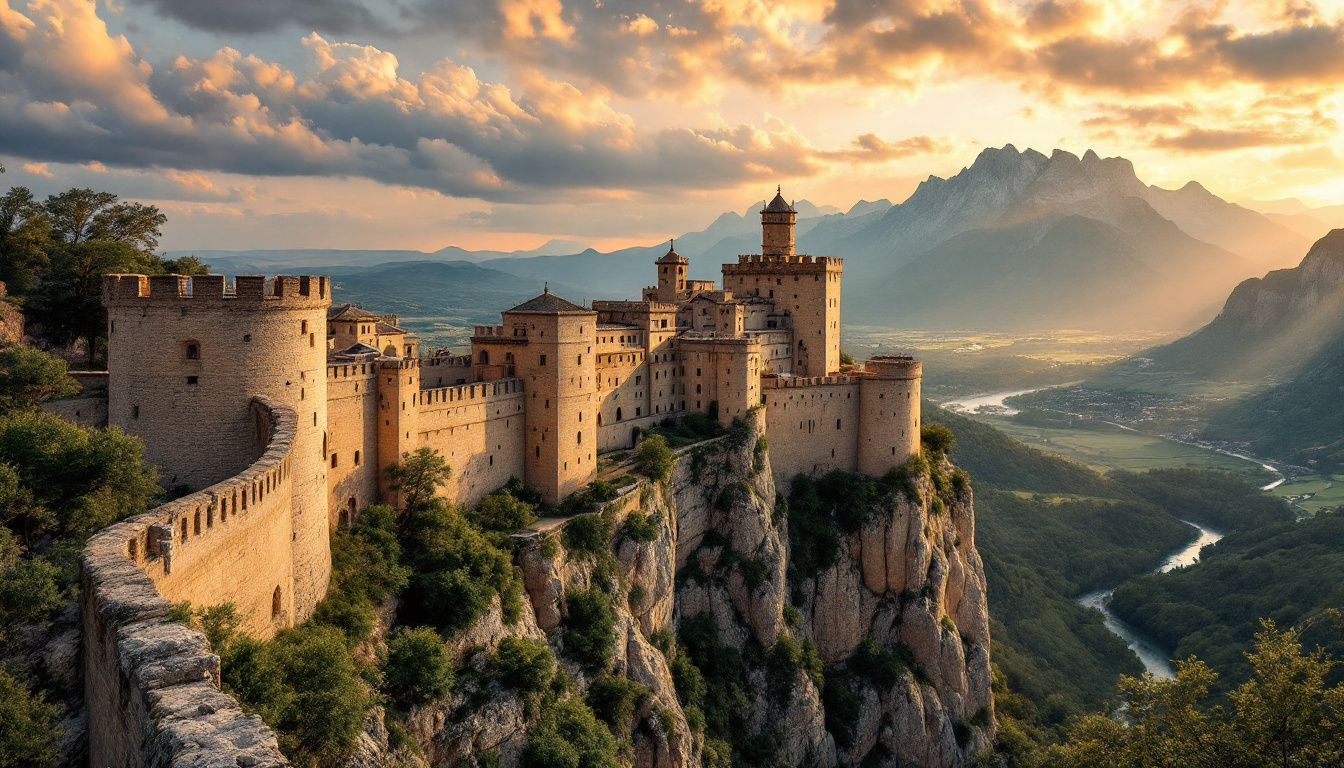Perched dramatically between the Alps and Provence, Sisteron captivates visitors with its striking silhouette against the azure Provençal sky. This extraordinary French town, sliced in half by the sparkling Durance River, boasts a 12th-century citadel crowning a 500-foot limestone cliff – creating one of France’s most spectacular but underappreciated vistas.
The fortress that Napoleon couldn’t conquer
Sisteron’s magnificent citadel stands as one of France’s most impressive military structures, miraculously surviving centuries of sieges. During his return from Elba in 1815, even Napoleon Bonaparte had to negotiate rather than attack this formidable fortress. Today, visitors can explore its labyrinthine passages, ascend ancient staircases carved directly into rock, and enjoy breathtaking panoramic views that once served as crucial defensive lookouts.
“Our citadel tells the story of Provence itself,” says local historian Marie Durand. “From medieval conflicts to the French Revolution and World War II bombings – these walls have witnessed it all, yet still stand proud.”
A medieval maze waiting to be discovered
Below the citadel, Sisteron’s historic center unfolds like a medieval tapestry. Narrow cobblestone streets wind between centuries-old buildings with sun-faded facades in classic Provençal hues. These charming passages, locally called “andrones,” create fascinating networks of vaulted walkways and hidden squares that reward curious explorers much like Vietnam’s culturally-rich hidden cities.
Where dramatic landscapes create natural art
Sisteron occupies a geological masterpiece – the “Clue de Sisteron,” where the Durance River dramatically cuts through the Alps. This natural gateway between northern and southern France creates a startling transition zone where Alpine severity meets Mediterranean warmth. The massive Rocher de la Baume rock formation looms opposite the citadel, completing a landscape that has inspired artists for centuries.
A cathedral of remarkable proportions
The Notre-Dame-des-Pommiers Cathedral reveals Sisteron’s historical significance. Built between 1160 and 1220, this Romanesque marvel features distinctive Lombardian influences and ranks among the largest religious structures in Provence. Its austere beauty and remarkable acoustics make it a hidden gem for architecture and music enthusiasts alike – offering the same sense of discovery as America’s natural stone arches.
The museum that measures eternity
Housed in a 17th-century chapel, Sisteron’s unique Musée Terre et Temps (Museum of Earth and Time) explores humanity’s relationship with chronology. The collection includes fascinating ancient timekeeping devices, from water clocks with intricate automatons to early sundials and calendars. The museum’s centerpiece, a massive Foucault pendulum, swings hypnotically as it demonstrates the Earth’s rotation.
A gateway to natural wonders
Beyond the town limits, Sisteron serves as the perfect base for exploring Haute-Provence’s natural splendors. The nearby Gorges de la Méouge offers crystal-clear swimming holes and hiking trails without the crowds found at more famous locations like Greece’s overcrowded destinations. The Grotte du Trou de l’Argent rewards adventurous hikers with dramatic limestone formations and panoramic views.
Where Provençal cuisine shines
Local restaurants serve authentic Provençal cuisine featuring regional specialties like lamb raised on the lavender-scented plateaus surrounding Sisteron. The town’s location at the crossroads of culinary traditions creates a fascinating fusion of Alpine hearty fare and Mediterranean freshness, offering a culinary experience as rich and nuanced as Sweden’s intricate coffee culture.
A cultural calendar bursting with authenticity
Throughout the year, Sisteron embraces its heritage through vibrant festivals. Medieval celebrations bring the fortress to life with period costumes and ancient crafts, while the Nuits de la Citadelle transforms the historic structure into a dramatic concert venue under starlit skies. These events provide a deeper connection to local traditions than you’ll find at many of Thailand’s tourist-packed beaches.
“When summer evenings bring performances to our citadel, it feels like the stones themselves are singing,” explains Catherine Morel, director of the town’s cultural office. “These aren’t shows created for tourists – they’re celebrations that have evolved naturally from our community.”
Sisteron may not have the international fame of Provence’s lavender fields or coastal resorts, but this historic sentinel offers something increasingly rare: an authentic French experience where dramatic history, breathtaking geography, and living traditions converge into something truly unforgettable.
